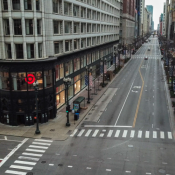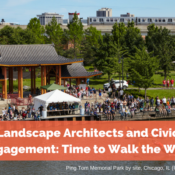Author: Ernest Wong
COVID-19 Op-Ed by Ernest Wong
This week will be a month since we closed our office and sent everyone home to work remotely. It’s given me time to reflect on the impact of this pandemic on all of our lives. Recalling prior events such as 9/11 and the 2008 recession that impacted how we viewed the world, this Coronavirus event will certainly be life-altering in ways we can’t even imagine. As resilient as we are as a society and a human race, we also are susceptible to pandemics, natural disasters and even our own ignorance.
This incredibly dangerous event has me thinking about our future. As one of the high-risk individuals of being a baby boomer with a history of respiratory problems including a recent bout with pneumonia, I also have a dog that must be walked daily. I’ve been trying my hardest to abide by the social distancing, constantly wiping down surfaces and door handles, and limiting my movement to a small area surrounding my computer. As the weather has been changing, I’ve seen more people using this time to get in shape, occupying the valuable streets and park spaces that we covet, and generally ignoring all of the warning signs and practices that have been told to us on television and the internet. We just can’t help ourselves, and now our Chicago parks and the lakefront have been closed to the public.
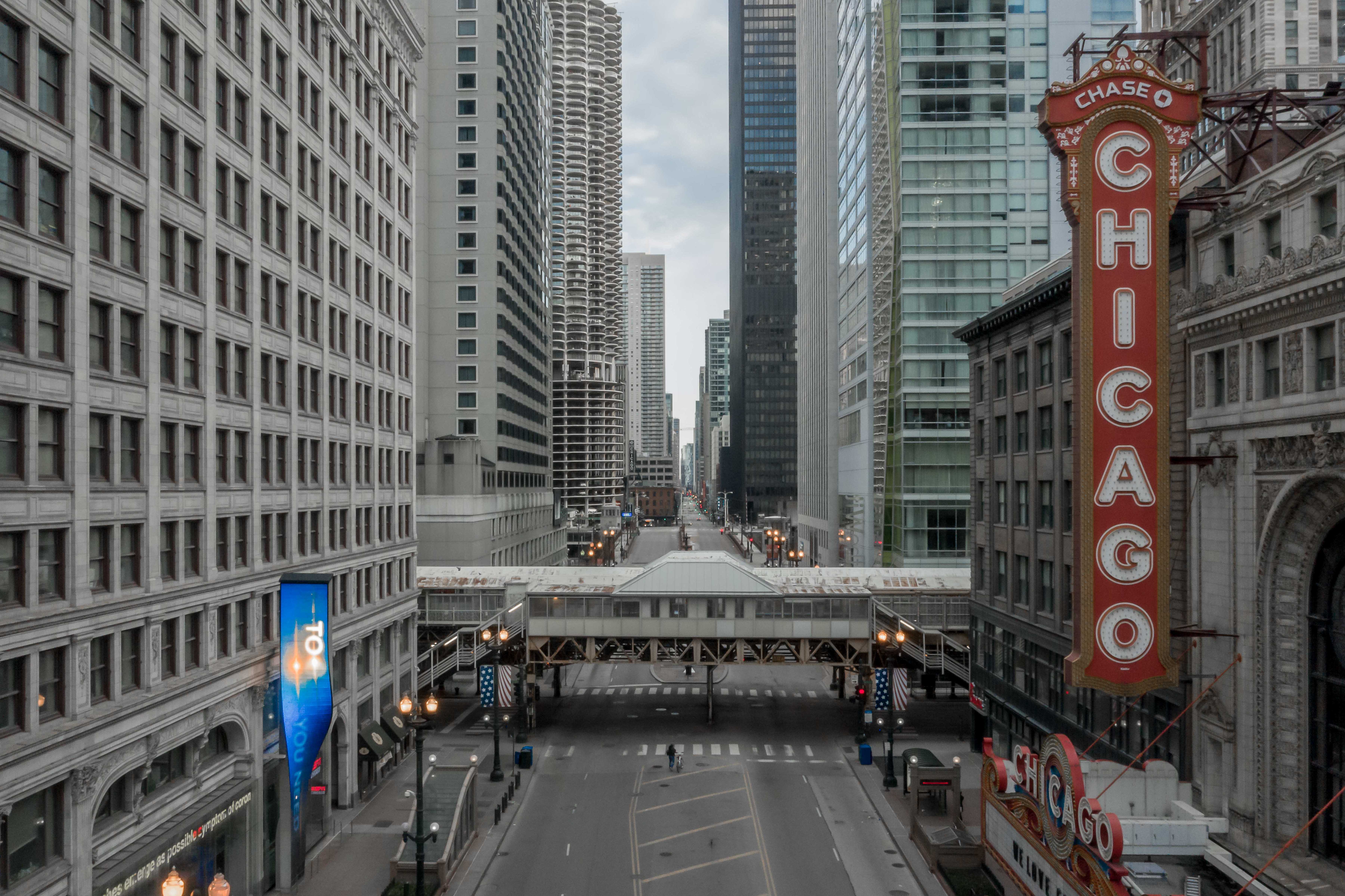
“Empty State Street retail corridor in downtown Chicago”: John Boehm for site design group, ltd.
More importantly, however, I’ve had a chance to connect with numerous business owners, community leaders and city officials that has me thinking about the near future. Especially the devastation to the service providers that includes so many restaurateurs, hospitality and hotel workers, event planners, retailers, gyms and even the healthcare industry that includes dentists and optometrists, that we often take for granted. As the construction sector starts to take a hard look at their project loads, everyone from developers, architects and contractors all are looking at their balance sheets to forecast their liabilities in the months to come.
The practice of landscape architecture will change dramatically. After spending a career of figuring out ways to connect people and designing public spaces for people to gather and engage, all of that will go out the window. William Whyte wrote and documented the benefits of social gathering and behavior, the security of volumes of people in public spaces and the economics of dynamic open places. While this still remains true, the billions of dollars spent on signature civic parks and neighborhood playgrounds will succumb to our fears of touching each other. The fear of the handshake, the fear of the euro-greeting, the fear of smiling at each other starts to erode our senses. Or as Jack Nicholson’s character in “The Shining” puts it, “All work and no play makes Jack a dull boy.”
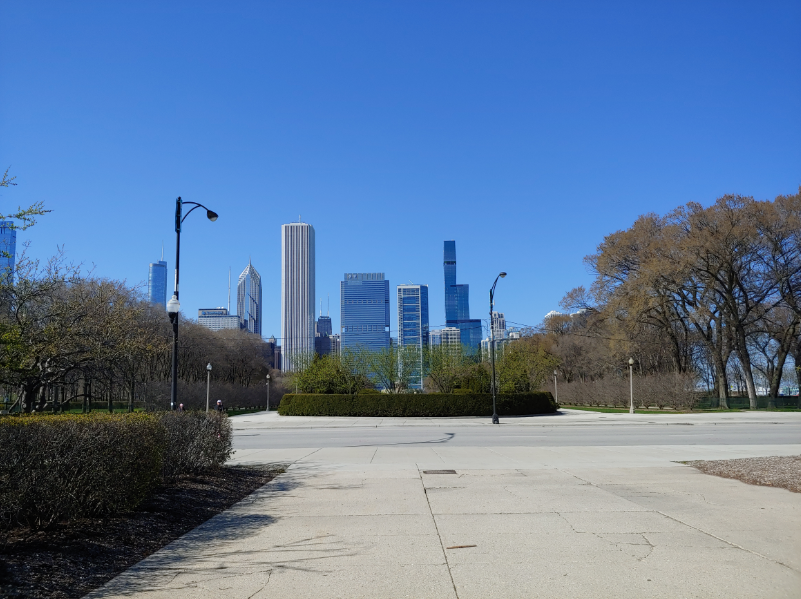
Grant Park; Image: site design group, ltd.
So where do we go from here? This pandemic will certainly affect how we interact with each other and how we live, work and play on a daily basis. Public transportation will certainly change and likely get more expensive. The way we live will certainly become more isolated. Will this regenerate an exodus to the suburbs? The “white flight” of the 2020’s? The way we work will certainly entail more teleconferencing and other digital platforms. Something that this generation has been trained to do by texting and instagramming each other even as we sit next to each other. Artificial intelligence will boost and flourish. And where will that leave those who can’t afford technology? Finally, the way we play will become more isolated and distant. Our National Parks will be inundated with folks rushing to get away from each other in the name of “connecting with nature”. It’s a sad scenario, but probably a very real scenario as we enter a Brave New World.
As we’ve seen from other countries, this can’t last forever. This will affect our kids and how they think of the world, and shape the way we communicate and travel. I believe that we’ll all have to be smarter, more disciplined, and respectful of each other. We’ll have to approach life more timidly at first, until we can gain more trust in ourselves and each other. It’s almost like learning how to walk again. One thing is true though, is that we’ll be better prepared for the next dilemma.

Image: site design group, ltd.
Perhaps there is a solution in sight. Through our discourse and fear, maybe we will find not only a vaccine for this virus, but an empathy to treat each other with dignity and kindness. One thing I’ll suggest is that we all take the time now as we’re confined to our homes, to think about life in the future and write about it somewhere. Whether in a personal diary, on a blog or even through your favorite organization’s portal, it will document where we are now in this point in history. If you have ideas on how this pandemic can find opportunities to change our public lives, whether it’s public transportation or your internet connection, food delivery service or how we gather together in the future, this is the time to share your thoughts. Documenting this moment in history will gain insight in how we plan for the future, whether it’s the private or the public realm. I’m looking forward to the next time I can hug my friends and family, or smile and wave across the bar or restaurant at my colleagues or even say “hello” to my fellow dog owners in the park.
Please be safe and vigilant. I’m thinking of you all as we slowly move forward.
—
Lead Image: Brodie Kerst Productions for site design group, ltd.
Landscape Architects and Civic Engagement: Time to Walk the Walk
We live in a precarious time. Unprecedented some might say, where every day we have no idea which way our government is moving. Even the lifelong politicians (as well as the newbies) are confused by this uncertainty and lack of direction. I can’t recall a time where there was such uneasiness with our policies, funding, and dysfunction of both major political parties. All three branches of our government are in disarray, and who knows when chaos is going to erupt.
I’m a baby boomer. That of a generation following World War II, with immigrant parents that came to this country for education and found themselves exiled here as China turned into a Communist country in 1949. There was no going back for them. I grew up with my formative years seeing our cities burn, and the white flight to the suburbs became commonplace. I saw the protests and polarization of our nation – the worst since the Civil War – envelop our country. I’ve also seen the re-birth and healing for three or four generations, from yippie to yuppie to a new generation of hipsters moving back to our cities without cars, touting ideas of apps ruling the world, and organic, local food filling our plates. Yet the same issues of race, immigration, global warming, and social justice continues to repeat itself.
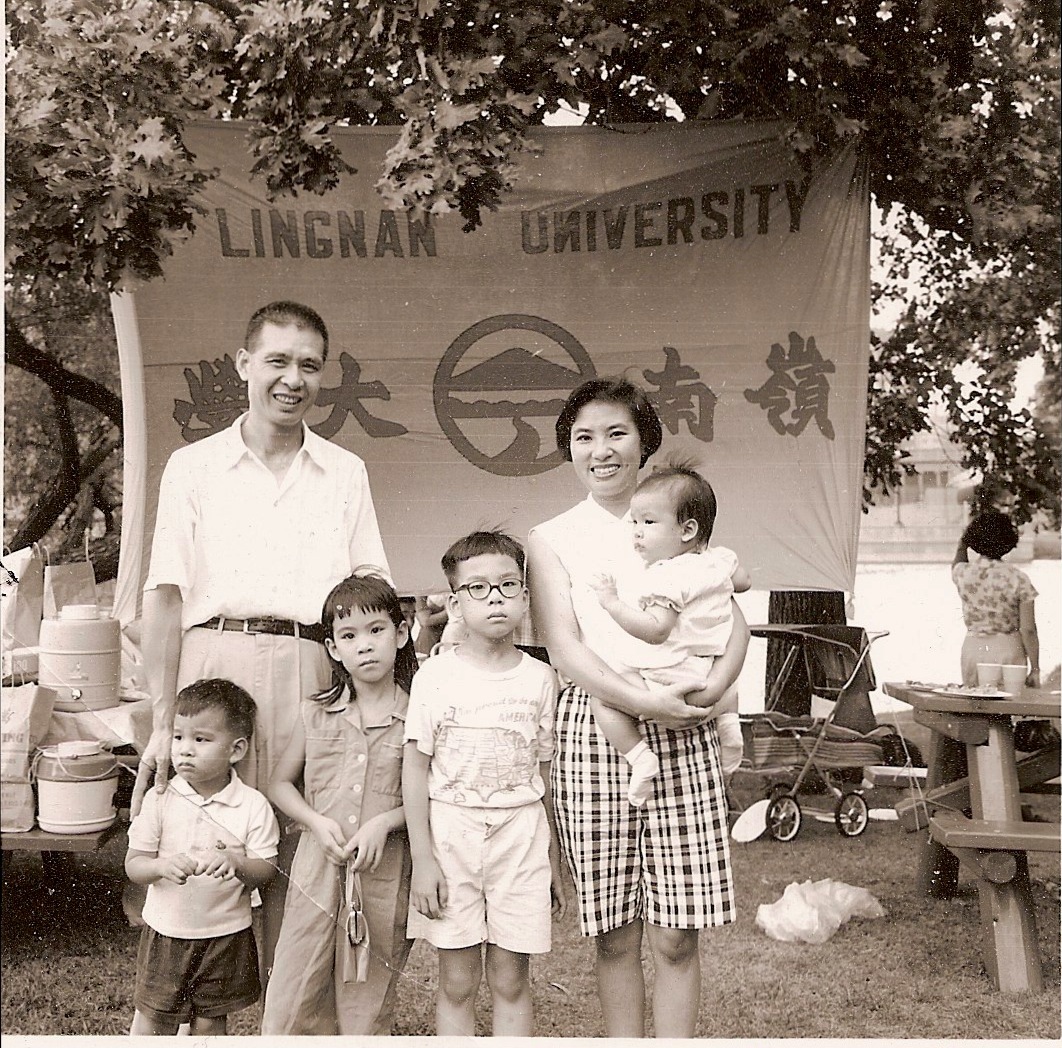
Wong Family, circa 1961. Ernest Wong, front left.
As a nation, however, we are following the trend of nationalism that is flourishing around the globe. This nationalism is based on identity, which since WWII, has continued to change. Globalization has integrated us all, mixing cultures and ideas, foods, and religious practices. And we haven’t quite learned how to cope with this change. So what does this all have to do with Landscape Architecture?

Dorchester Art + Housing Collaborative by site, Landon Bone Baker Architects, Brinshore Development, and the Rebuild Foundation, Chicago, IL (Image: Ballogg Photography)
Landscape Architects have an obligation to view the world in a holistic manner. When we deal with stormwater and flooding, that water doesn’t have borders. When we design infrastructure projects that impact wetlands and how pedestrians intertwine with vehicles, the challenges require thoughtful and effective solutions. Additionally, Landscape Architects need to embrace Civic Engagement as part of our practice. We provide professional services when we testify at Plan Commissions or lead community meetings, many times acting like psychologists to the public. It is exactly these moments that the general public realizes what we do and the value of our work. Beyond climate change and sustainability, ecological restoration, and public education, perhaps we can start to solve some of the social issues that are causing so much unrest. Can we address issues of polarization, joblessness, equity, and education? We certainly can serve as the catalyst to provide solutions, much of it focused on how we design communities. In my travels to Capetown and Shanghai, I’ve seen how urban planning historically has separated people by race and economic status, controlling how people move from one place to another. The same thing occurs in Palestine and Bogota. Not that we can solve the world’s problems (or can we?) at once, but the skill set of Landscape Architects and Planners is pretty powerful.

The Burnham at Woodlawn Park by site and Landon Bone Baker Architects for the Preservation of Affordable Housing (POAH), Chicago, IL (Image: Scott Shigley Photo)
The work that we engage in is important. We design outdoor spaces. Public spaces, private spaces, places for playing, places for healing, spaces that capture the essence of who we are as human beings. Water, air, trees, and even animals are elements that we all celebrate by using them in deliberate design solutions. The commonality of outdoor space helps us interact with each other, touch the natural world and understand that we share these elements. Thus, we impact the quality of lives regardless of race, economic status, and culture. It is exactly this story that needs to be told to those who define policy, determine our funding, and keep our existence as professionals alive. So above serving ourselves and just our profession, we need to look beyond the small microcosm of our design world. We need to position ourselves to serve in the public realm, where our voices can be heard and our decisions can impact communities beyond just design. The leverage of Public Engagement is tremendous as it translates back to our struggling profession. It gives us power, responsibility, and most importantly, civility.

Ribbon cutting at Chicago Park District Park 574 by site, Chicago, IL (Image: Rose Yuen Photography)
Jonathon Geels’ moving article “The Necessity of Advocacy: Discussing the Politics of Landscape Architects” said a lot about the need to have politicians hear our story. Folks like William Pauley, FASLA, the civic leader in Atlanta was instrumental in having the voice of a Landscape Architect lead that city. Ed Garza, ASLA served as the Mayor of San Antonio, as did Michael Dul, ASLA, in Bloomfield Hills, Michigan. Mia Lehrer, FASLA serves on the US Commission on Fine Arts and the Hollywood Design Review Committee, and Terry Guen, FASLA, serves on the US Advisory Council on Historic Preservation. While numerous Landscape Architects have and continue to serve on public and governmental committees and commissions, it is the exposure to the general public that enhances our status as professionals. Even when you stand up in a community meeting with a knowledge base that exceeds others in the room, it speaks volumes about our profession. When you vote and immerse yourself in local and national politics, you empower yourself and the profession by default. We continue to talk the talk amongst ourselves and our allied professions, but it’s time to walk the walk in the general public. It is this effort and commitment that will establish policy for Landscape Architecture, create funding for our projects and develop a long sustainable market for our profession. And maybe we can change the world in the meantime.
—
Ernest C. Wong, FASLA is a founding Principal of site design group, ltd. (site), a landscape architecture and urban design firm based in Chicago. He serves on the Chicago Commission of Cultural Affairs and Chairs the Permit Review Committee of the Commission on Chicago Landmarks.


